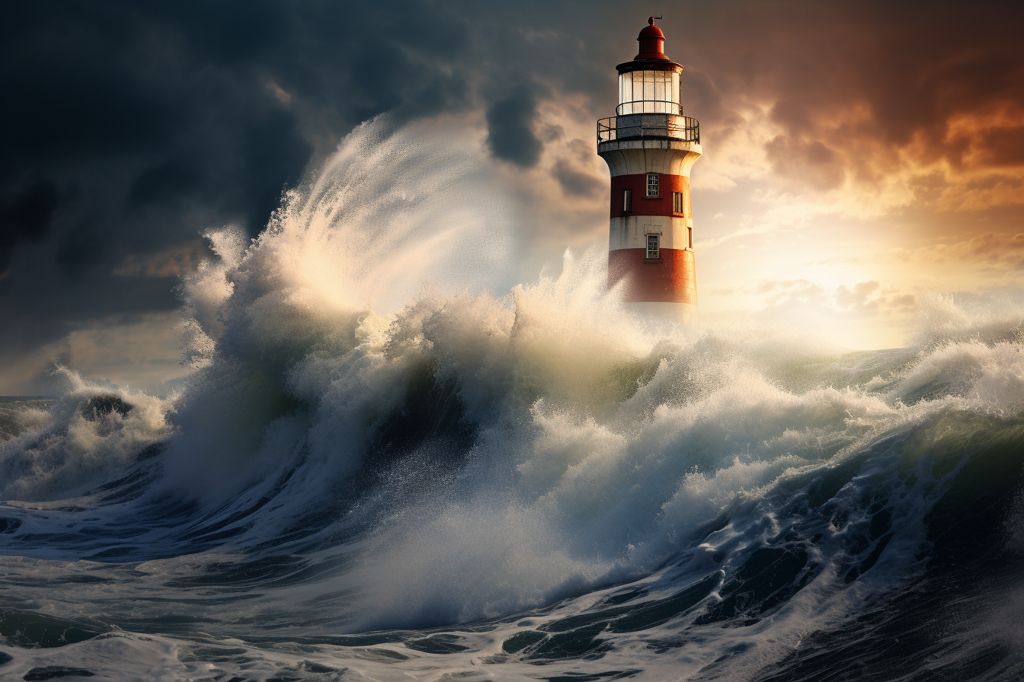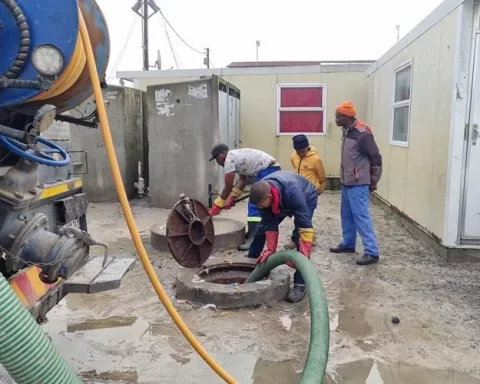Rising Tides: A New Challenge for Coastal South Africa
The constantly shifting tides along the coast, a source of inspiration for many artists and poets, now present a new threat to South Africa’s shoreline. As we marvel at the awe-inducing power of nature, the National Sea Rescue Institute (NSRI) has urged increased caution among coastal communities. The spring tide, a phenomenon intensified by the new moon, has caused chaos throughout the Eastern, Southern, and Western Cape, prompting people to consider the fragile balance between human settlement and the ocean’s unyielding advance.
The spring tide has been relentless in its attack on these coastal towns, showing no mercy. One cannot forget the striking images and videos shared on social media that showcased the sheer power of these storm waves, as huge waves tossed cars around like toys and inundated homes and businesses. This serves as a stark reminder of the ocean’s unpredictable nature and brings to mind the captivating beauty of Romantic-era paintings that portrayed the stormy sea.
The ocean’s onslaught was continuous along the shores of Gordon’s Bay, Stilbaai, Mossel Bay, and Three Anchor Bay in Cape Town. Tragically, a 93-year-old woman fell victim to the spring tide at Wilderness’s Leentjies-klip beach. A massive wave swept her away, a heartbreaking reminder of the ocean’s ability to uproot and alter lives in an instant. Additionally, a man was rushed to the hospital, and the City’s Disaster Risk Management Centre had to evaluate the damage in the Gordon’s Bay coastal region.
The Aftermath: Assessing Damage and Preparing for the Next Spring Tide
As the tide continued to rise and fall, the devastation left behind became increasingly apparent. Eight properties in the Gordon’s Bay Bikini Beach area experienced significant damage, while the Brass Bell restaurant in Kalk Bay dealt with shattered windows and destroyed seating areas. This popular venue is now partially closed to the public, with one person suffering minor injuries.
In response to this escalating situation, the City’s Department of Solid Waste has launched clean-up efforts along the beach. Traffic services and law enforcement have also been mobilized to manage road closures. Although the South African Weather Service (SAWS) warnings are restricted to the southern areas of the province, both the NSRI and the City have encouraged residents in the metropolis to exercise caution and stay away from coastal areas as a safety measure.
As coastal communities struggle with this unwelcome intruder, NSRI spokesperson Craig Lambinon has announced that another spring tide is anticipated. He insists that staying vigilant is crucial, saying, “It’s starting to rise already from 2, 3 on Sunday afternoon and peak between 4 and 5 pm, also depending on where you are around the coastline.” Lambinon also stressed the importance of keeping an eye on SAWS alerts, advising the public to “be cautious, don’t take unnecessary risks or put yourself in unnecessary danger.”
Lessons Learned: Resilience and the Need for Harmony
In a world where climate change and rising sea levels threaten to transform our coastal landscapes, the spring tide serves as a powerful reminder of the ocean’s might and unpredictability. As communities pick up the pieces and rebuild, one cannot help but ponder the fragile equilibrium between the sea and the land. In the words of poet Kahlil Gibran, “And the sea’s hand-clasp is even more dangerous than its enmity.”
These coastal communities, bruised but unbroken, now face the formidable task of restoring their homes and businesses. As they rise like the mythical phoenix from the tide’s wreckage, let their resilience be a testament to the human spirit’s capacity to endure nature’s wrath and continue forward in the face of adversity.
When reflecting on the predicament of these communities, it is crucial to acknowledge the broader implications of the encroaching sea. The spring tide is just one example of the ocean’s power, a harbinger of the challenges that await us. It is only through vigilance, preparation, and a profound respect for nature’s forces that we can hope to adapt and prosper in this ever-evolving world.
Many have advocated for increased investment in coastal defenses and infrastructure, seeking to stand strong against the ocean’s power. But perhaps the most important lesson to be derived from this event is the need for greater harmony between humanity and the sea. As we establish our presence along the shoreline, we must remember the ocean’s power to reshape the land and our lives. Building a sustainable future requires that we confront these forces, striving for a balance that allows both human and natural worlds to thrive side by side.








